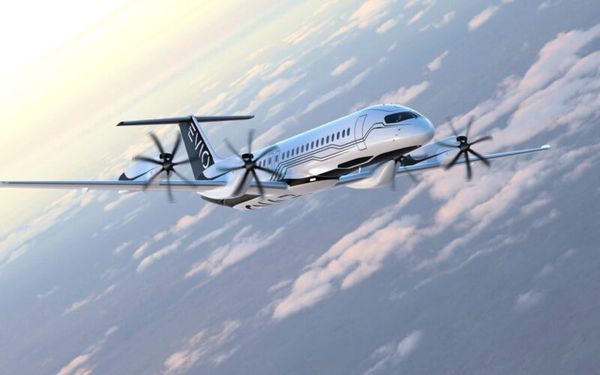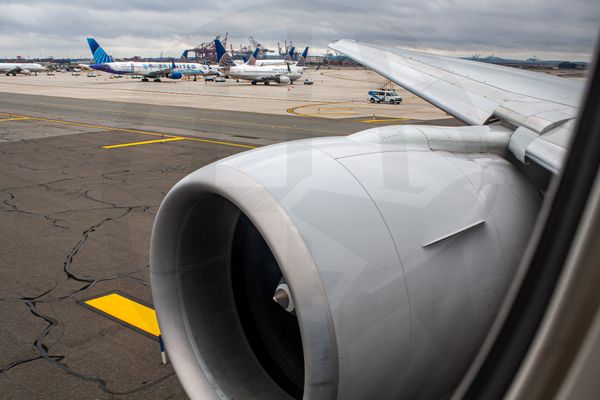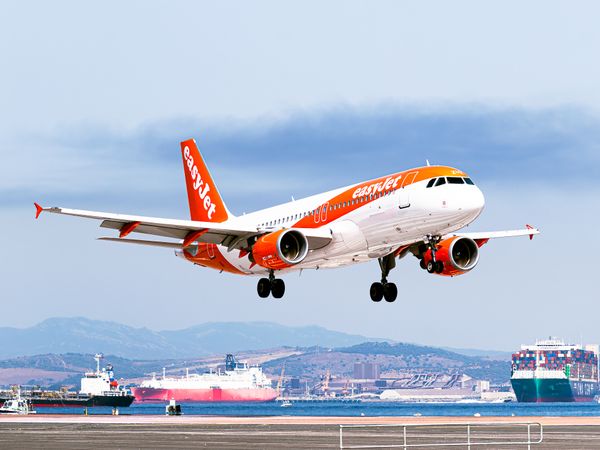When one thinks of a career in aviation, working as a pilot oftentimes comes to mind. However, airline operations go far beyond time in the air. Bags need to come on and off the aircraft, fuel needs to be replenished, the cabin cleaned, cargo dropped, aircraft towed- a large list of important tasks is involved in the departure of every flight. If one likes a good workout, loves a fast-paced environment and doesn't mind the smell of jet fuel, then the ramp could be a great career option.
Every airport has some form of "ramp" personnel. Carriers can employ "in-house" ramp crews or contract these jobs out to third parties- especially on regional flights. Airline hubs operate differently than field stations, and every airport authority has different protocols. This results in each airport creating its own style of operations. My journey began last fall at a Springfield Inn and Suites in downtown San Diego. After applying online, I reserved my 8 a.m. interview spot and waited for my turn. After an hour-long mass interview, some applicants were asked to leave the room. If you were left sitting in the interview room, you made it. Low and behold, after 20 minutes of sitting and thumb twitching, I was being welcomed at my new job.

The post-interview process requires you to take drug tests, fingerprints and more paperwork than one can imagine. I could not stay after my interview, which made submitting documentation harder and required a flight to Phoenix for fingerprinting. After 3 months of waiting, I got my Airport Security Badge (SIDA) and got my first training date.
My next step was to head to Dallas for a week-long classroom training program. Two exams later, I was certified to begin performing my duties, and headed back home. After one week of additional training, my 100-day probation began. 100 days in an orange vest lasts as long as it sounds, as I was sporting the unwritten "I'm new so make me do all the work" sign above my head. After 100 days, I had no tugs crashed, bags lost nor sheer pins broken. As a result, I was inducted into the union and received my green vest.
If this career sounds interesting to you, just know that shifts start as early as 4 a.m. and end as late as 12:30 a.m., so you'll need to be prepared to work early and late hours. Until you build enough seniority, you will have to work off-hours (so making friends who can trade shifts might be a good strategy). Part-time and full-time agents share the same duties on the ramp, and usually between two to six flights are turned on a given day. Crews are usually made up of three people plus the crew chief, but additional help is common- especially on tight turns or slow nights.

Rampers drive belt loaders and tugs with carts. The offload and upload require all of us to get in the cargo bins to move and stack baggage. Luggage and mail are the most common items, but more unconventional cargo like puppies come through from time to time. Between fuelers, catering, cleaners and security running around us, days can be busy and chaotic. The usual attire is the safety vest, hearing protection, gloves and knee pads. However, the elements are unpredictable, so you need to dress appropriately.
Entering the industry with no prior ramp experience, I picked up on the trade quickly. However, coming in with an understanding about aviation helped me adjust, as the duties become second nature after some experience. A big success factor on any ramp is drive. Asking yourself if you really want to be on the ramp is important before beginning. Are you passionate about aviation? Are you willing to give your best to the team? Airports operate practically 24/7, so there's always work to be done. Whether you are in the bag room, on a crew or cleaning lavatories, everybody holds a responsibility to get aircraft out safely and on time.

San Diego has plenty of fair weather throughout the year, and its smaller size and ease of operations make it a great place for a ramper. Regardless, if you have a passion for aviation and a willingness to work, you'll be successful. Being a ramper is not always easy, but having a positive mindset can make the job enjoyable and rewarding. Promoting safety is a must, but it is certainly possible to have fun on the job.
Growth and promotion opportunities are always an option, whether it's in frontline or corporate positions. Regardless of the role, at any airline we all have one goal in mind, and make it a point to look out for one another- we truly are one, big airport family.
JetBlue Expands Midwest Footprint with New Daily Service Between New York-JFK and Cleveland » Iraqi Basra Airlines Secures Air Operator Certificate » Lufthansa Technik Unveils Major ACJ318 Elite Upgrade Program »
Comments (1)
 GreggB57
He has it right. I worked ramp/ Customer Service for a regional airline for over twenty years at both hubs and line stations. It's not for everyone, but it's a lot of fun at times. You need to like working odd hours and out in all kinds of weather.
GreggB57
He has it right. I worked ramp/ Customer Service for a regional airline for over twenty years at both hubs and line stations. It's not for everyone, but it's a lot of fun at times. You need to like working odd hours and out in all kinds of weather.
Add Your Comment
SHARE
TAGS
STORIES airportairlinejobsrampairlineoperationsRECENTLY PUBLISHED
 How Evio’s 810 Airliner Aims to Rescue Regional Aviation
As the regional airline industry grapples with a staggering 27% fleet reduction over the last five years, a new powerhouse has emerged from stealth to reclaim "thin" routes. Evio Inc., a Montreal-based startup backed by aerospace titans Boeing and Pratt & Whitney Canada, has unveiled the EVIO 810, a clean-sheet, 76-seat "strong hybrid" airliner designed to restore profitability to short-haul sectors.
INFORMATIONAL
READ MORE »
How Evio’s 810 Airliner Aims to Rescue Regional Aviation
As the regional airline industry grapples with a staggering 27% fleet reduction over the last five years, a new powerhouse has emerged from stealth to reclaim "thin" routes. Evio Inc., a Montreal-based startup backed by aerospace titans Boeing and Pratt & Whitney Canada, has unveiled the EVIO 810, a clean-sheet, 76-seat "strong hybrid" airliner designed to restore profitability to short-haul sectors.
INFORMATIONAL
READ MORE »
 FAA Finalises Airworthiness Directive for GE90 Engines Following Powder Metal Contamination Discovery
The Federal Aviation Administration (FAA) has officially finalised a high-priority airworthiness directive (AD) targeting General Electric GE90 engines, the primary power plants for the Boeing 777 fleet. The ruling, published on January 2, 2026, addresses a critical manufacturing defect involving iron contamination in powder metal components that could lead to uncontained engine failures.
NEWS
READ MORE »
FAA Finalises Airworthiness Directive for GE90 Engines Following Powder Metal Contamination Discovery
The Federal Aviation Administration (FAA) has officially finalised a high-priority airworthiness directive (AD) targeting General Electric GE90 engines, the primary power plants for the Boeing 777 fleet. The ruling, published on January 2, 2026, addresses a critical manufacturing defect involving iron contamination in powder metal components that could lead to uncontained engine failures.
NEWS
READ MORE »
 EasyJet Airbus A320 Emergency Landing at Lamezia Terme
easyJet Europe Airbus A320-200 was involved in a serious aviation incident on the morning of December 27, 2025, after suffering an uncontained engine failure during its descent into Lamezia Terme International Airport (SUF).
NEWS
READ MORE »
EasyJet Airbus A320 Emergency Landing at Lamezia Terme
easyJet Europe Airbus A320-200 was involved in a serious aviation incident on the morning of December 27, 2025, after suffering an uncontained engine failure during its descent into Lamezia Terme International Airport (SUF).
NEWS
READ MORE »



